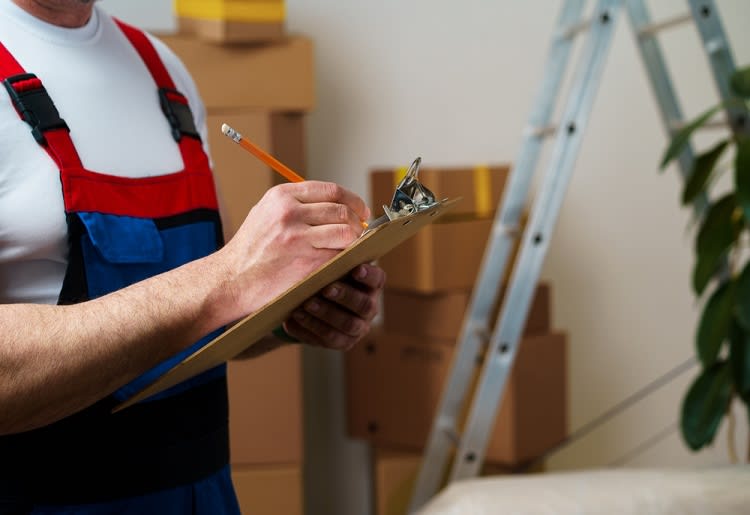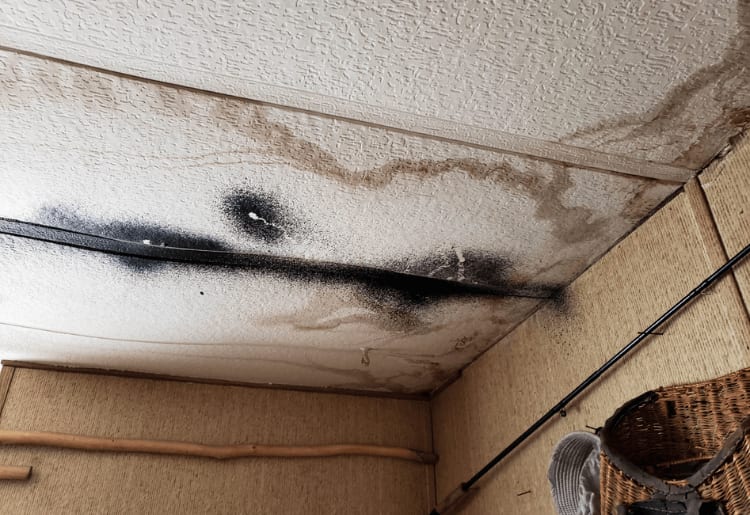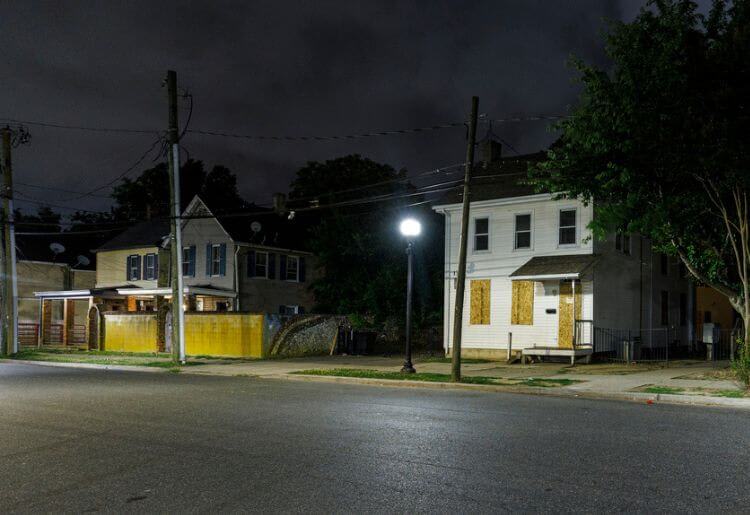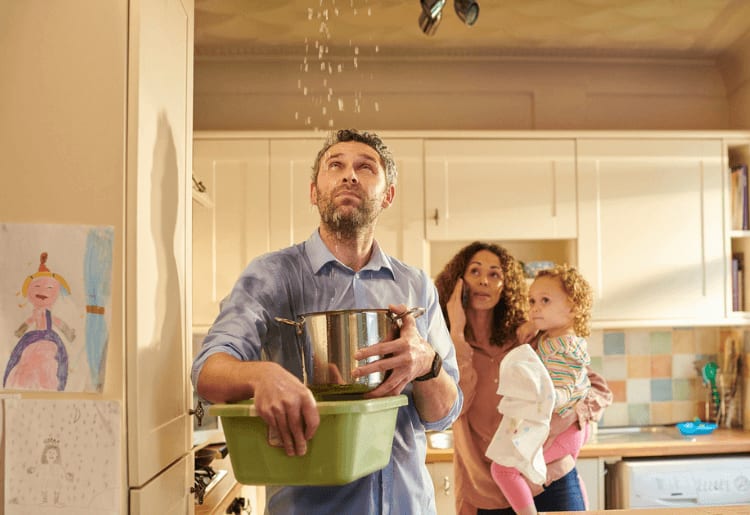Buying a house that unknowingly needs spending a fortune on renovation costs shouldn’t be a part of the deal. As a potential buyer, you shouldn't fall into such traps and must conduct proper inspections of the foundation, roofing, appliances, and other fixtures.
A homeowner warranty, an insurance cover that comes in handy when damages occur, should be of utmost priority. You also need to be aware of hidden costs associated with buying a home, such as closing costs and property taxes.
We've compiled a list of 10 red flags to look out for when buying a new home.
1. Inadequate Drainage
As a potential home buyer, poor drainage should be one of the most important things to look out for when inspecting a house. Inadequate draining is one red flag you don't want to risk missing, as it can potentially affect a house's foundation.
You may convince yourself you can manage this problem while improving your home, but be prepared for recurring problems, especially if the house has a low terrain.
How to Spot Bad Drainage
- Pool of stagnant water around foundation of house
- Flooding for hours after a downpour
- Overflowing or blocked gutters
- Puddles near downspouts
- Excess sand gathering around any flower beds
- Sloping landscape: Ideally, the ground should slope away from the foundation to divert water
- Mold or mildew
- Damp basements or crawl spaces
If possible, schedule the inspection during or shortly after rain to observe how water behaves on the property.

2. Pests
No one wants to buy a pest-infested apartment. Identifying such houses during inspection can be tricky because pests such as rodents or bats are nocturnal. To be safe, you can hire a licensed professional to inspect the house for any pest issues. You can also choose to fumigate the entire house after purchasing it.
How to Spot Pests
- Closely keep an eye on the furniture to see if there are bugs
- Check kitchen furniture and cabinets for cockroaches and rodent feces
- Check the ceilings for unusual holes
- Keep an ear out for movements in the ceilings
3. Structural Issues
Building a home with a faulty structural layout can be detrimental, causing health and safety concerns. In fact, it's estimated that 6 million Americans live in houses with structural issues.
How to Spot Structural Issues
- Slanting door frames and walls
- Doors and windows not being able to close
- Cracked, rough, and saggy walls (Both inside and outside)
- Floors that slope or feel uneven when walking
- Cracks in the foundation, particularly wider or diagonal cracks
- Evidence of termite damage, such as mud tubes or damaged wood
As a potential homeowner, structural integrity should be at the top of your checklist when inspecting a house. This is because it is expensive to fix and could collapse, causing injury or death. If there are concerns, hiring a structural engineer for a more detailed evaluation may be advisable.
» Ready to protect your HVAC system and your wallet? Discover the top home warranty plans for HVAC
4. Patches of Fresh Paint
Most realtors paint houses before inspection. A fresh coat of paint gives freshness and newness to a house, but it can also be used to cover flaws like damaged walls or parts of the ceiling that have been damaged by water.
How to Spot Patches of Fresh Paint: Look at patches of paint on the wall and ceiling in every area of the house that is unusually brighter than others. Ensure you ask if these paint patches can be removed to expose any secrets.
5. Odors
Did you know that both foul and pleasant odors are red flags? There’s no doubt that foul odors can chase away a potential buyer during an inspection. Drain odors can be a nuisance in bathrooms and kitchen sinks. However, a pleasant air freshener smell can be used to mask an odor during an inspection.
What Types of Odors Are Problematic?
- Smoke Odors: Could be hard to eliminate after smoking indoors.
- Pet Odors: Suggest possible challenges in odor removal.
- Sewer or Septic Odors: Signal plumbing or septic system issues.
- Chemical or Paint Odors: May imply recent renovations or cover-ups.
- Gas Odors: Immediate attention is needed; potential gas leak.
- Rotting or Decaying Odors: Point to structural or pest problems.
How to Spot Odor-Related Red Flags
- Air fresheners in every corner of the house
- Burning scented candles or incense to mask odors
- Overuse of scented cleaning products
- Preparing food or baking before showings
- Open windows during the winter
- Steam cleaning carpets to remove pet or smoke odors
6. Water Damage
Water can potentially cause severe damage to a home, most of which may reflect on the walls and ceilings. The house should be kept at a regulated temperature to prevent water damage. You can also check for leaks and see whether the gutters are clean.
To check for leaks during a home inspection when buying a new home, thoroughly inspect ceilings, walls, and floors for water stains, drips, or soft spots, and examine plumbing fixtures and connections for any signs of moisture or corrosion.

It’s important to ask whether the water damage is from a natural disaster, such as heavy rain flooding, or broken pipes behind the walls. Whatever the case, always identify the source of the water to prevent a recurrence.
How to Spot Water Damage
- Look for peeling or bubbling paint or wallpaper
- Inspect the flooring for warping, buckling, or discoloration
- Examine the baseboards for swelling or damage
- Check around windows and doors for water intrusion
- Inspect the attic for signs of leaks or water damage
- Look for rust or corrosion on plumbing fixtures and pipes
- Smell for musty or moldy odors, which can indicate hidden moisture
- Pay attention to any signs of water pooling around the foundation or in the yard
7. Bad Neighborhood Conditions

Bad neighborhood conditions raise safety, resale, and quality of life concerns, encompassing crime rates, poorly maintained properties, and limited amenities. On the less extreme side of things, limited amenities can include poor public services like quality schools, healthcare, public transport, few or no public parks, and few grocery store options.
How to Spot Bad Neighborhood Conditions
- Check crime statistics, school ratings, and community forums for insights
- Visit at different times of the day and night to gauge safety and noise
- Talk to locals
- Check for the presence of social amenities around
- If there is an excessively high number of vacant houses, do well to ask questions
- Visit local businesses
- Check for signs of well-maintained homes versus neglected ones
When figuring out if a neighborhood is good for you to settle in, paying attention to your instincts and comfort level in the area is most important.
8. Electrical Issues
Electrical issues are major and dangerous. Older houses may have electrical issues due to older panel, fuse, and wiring models. Though electrical issues may be hazardous, they can be overlooked if the buyer wants to change the electrical fittings.
How to Spot Electrical Issues
- Outlets and Switches: Test, look for damage, and ensure they work properly
- Check for modern circuit breakers and signs of overheating.
- Turn a light switch off and on to check for a flickering light
- Smoke Detectors: Confirm proper placement and functionality
- Watch out for excessive extension cords or power strips
- Hire an electrician to inspect the panels and wiring to be sure it doesn’t become a safety risk
9. Plumbing Issues

Plumbing issues can lead to water damage, mold growth, structural damage, and costly repairs, compromising a home's safety and value. In addition, dark water from damaged sewage pipes can potentially lead to infections if consumed or used for personal hygiene.
How to Spot Plumbing Issues
- Check Water Pressure: Turn on faucets and showers to assess water pressure; low pressure may indicate a problem
- Look for signs of water stains, dampness, or active leaks under sinks, around toilets, and near water heaters
- Test sinks, showers, and tubs to confirm they drain without backups
- Flush toilets to ensure they operate correctly and watch for slow draining or unusual sounds
- If the home has a sump pump, check its condition
- Check for signs of mold or mildew growth
- Pay attention for any unusual dripping or running water sounds in the walls or ceilings
If you do experience plumbing issues after buying a home, you should always check your home warranty policy to see if it has plumbing coverage.
10. Leaky Roofs
Leaky roofs can lead to water damage, mold growth, structural deterioration, and costly repairs, undermining a home's integrity and value. If you notice a house with a leaky roof, you may decide to renovate it, but the problem is that when an issue occurs with a roof that was once "only" leaky, it becomes a significant disaster. It's essential to fix the issue before acquiring the house.
How to Spot Leaky Roofs
- Inspect the attic for water stains, dampness, rot in the attic's insulation, rafters, or sheathing
- Look for water stains or discoloration in the ceiling
- Examine roof shingles - Are any missing, cracked, or damaged?
- Check the condition of the gutters - Are they clogged, leaking, or overflowing?
- Look for moss or algae on the roof, as it may indicate moisture
- Is there any sunlight seeping through the roof or attic?
- Does the chimney have any cracks or loose bricks?
Protect Yourself Before Your Investment

While buying a new home can be exciting, remember it is a substantial financial commitment. Making uncalculated acquisitions may leave you financially stranded, especially when buying a home that requires much attention.
It’s essential to look beyond a house's superficial qualities and stay focused to identify red flags that can turn into big and recurring financial problems and potential safety hazards for you and your family.

